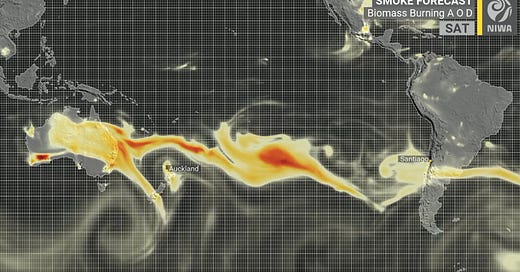An important interaction for the next few decades.
A few weeks back I talked about possible effect of wildfires on ozone. Well, the “game-changing” paper on the effects on ozone of biomass burning fanned by climate change, has just appeared. The definitive study was led by our old colleague, Susan Solomon.

Here’s how it works. If bush-fires have enough energy, as for example during the fierce blazes in Australia in early 2020, the intense heat generated can carry organic aerosols from the burnt material aloft so high that they reach the ozone layer at altitudes around 20 km or more. Once up there, they can remain aloft for months before gradually settling out under the force of gravity. At those altitudes, most of the chlorine from CFCs that causes ozone depletion is normally bound up in less reactive forms like hydrogen chloride (HCl, see the figure below) that don’t damage the ozone layer directly.

But, when those organic aerosols are present, these ‘inactive’ HCl molecules can stick on to their surfaces and react to release the more active forms of chlorine, such the chlorine oxides (e.g., ClO) that so efficiently destroy ozone at higher altitudes.
Because of the ongoing success of the Montreal Protocol, the concentrations of all of these chlorine-containing gases are gradually decreasing. But it will take decades before the problem disappears because of the long atmospheric lifetimes of the man-made chlorine source gases (especially CFC-11 and CFC-12). By the end of the century, it won’t be a problem because the concentration of chlorine-containing gases will have reduced back to pre-industrial levels. But in the meantime, these intense burnings, which are likely to become more prevalent under climate change, may be expected to temporarily reduce ozone by several percent, as was the case throughout mid southern latitudes in 2020 - including Lauder New Zealand.
The good news is that as far as skin-damage from UV radiation is concerned, the effects will be small because any increases in UV radiation due to ozone loss will tend to be compensated by decreases due to absorption or scattering by the aerosols.
But it’s still bad news for climate change. Enough carbon dioxide was emitted in those 2020 bushfires to DOUBLE the annual emissions from Australia. We can’t afford any more years like that!


